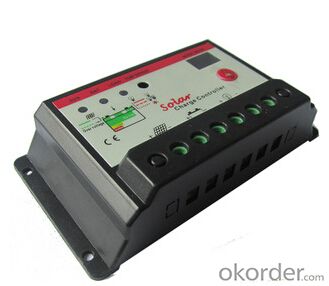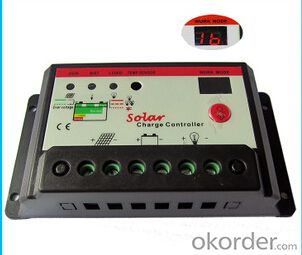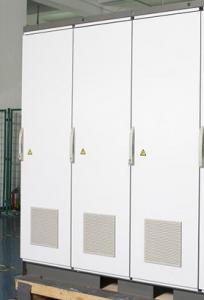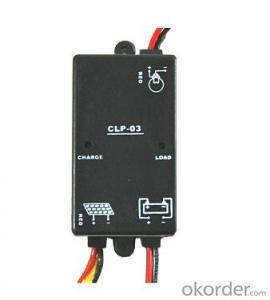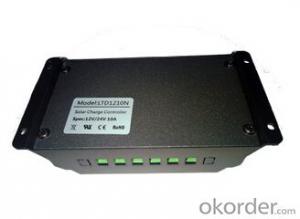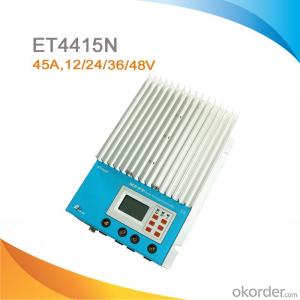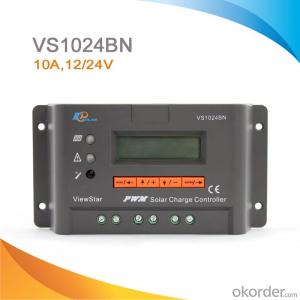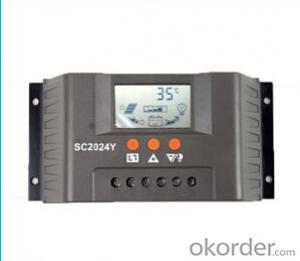60A MPPT Solar Controllers bygd Solar Charger Controller Model SC1524S for Streetlight System
- Loading Port:
- Shanghai
- Payment Terms:
- TT OR LC
- Min Order Qty:
- 10 unit
- Supply Capability:
- 50 unit/month
OKorder Service Pledge
OKorder Financial Service
You Might Also Like
Details of products:
product model: SC1524S 15A
External Size:133mm×70mm
Mounting hole Size:126mm×50mm
Performance
12V/24V automatical adaption, control and set button changed into tact key, larger contact terminal can offer wire of 6 m2
◆ double LED digital display, clear for observation
◆ recharging mode by three phases
◆ PWM pulse modulated recharging technology
◆set light-dependent control and 1-13hous time control
◆short circuit protection, overvoltage protection, overcurrent protection and lighting protection
◆standy current no more than 5mA
example
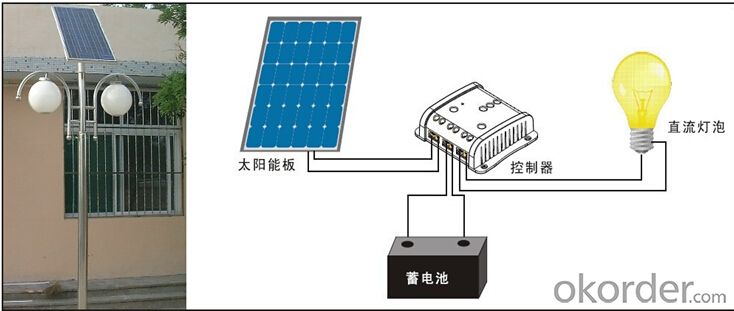
Technical characteristics
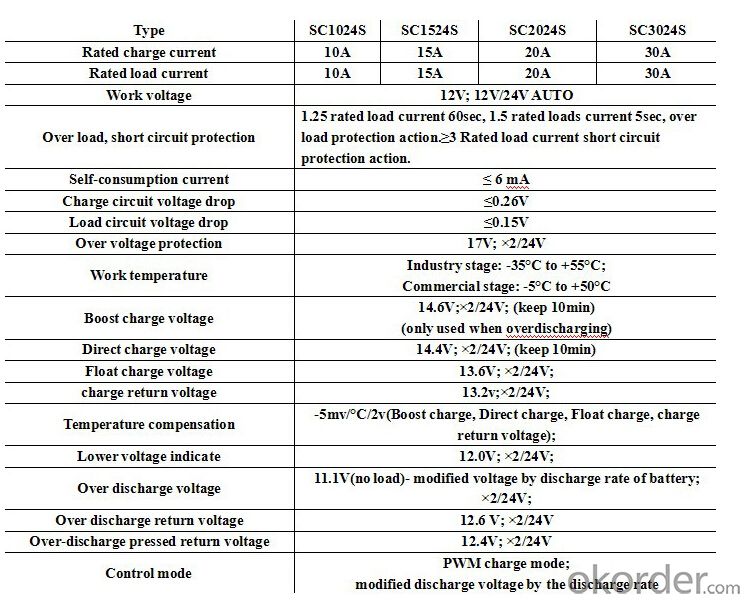
P.S.: This product is manufactured by order, so please call us for more info and service
- Q: Do solar controllers require regular maintenance?
- Yes, solar controllers do require regular maintenance. This typically involves checking the connections, cleaning any debris or dust, inspecting the wiring, and ensuring proper functioning of the controller. Regular maintenance helps to optimize performance and prolong the lifespan of the solar controller.
- Q: Can a solar controller be used with solar-powered indoor communication systems?
- Yes, a solar controller can be used with solar-powered indoor communication systems. A solar controller helps regulate and optimize the charging process of the solar panels, ensuring efficient power conversion and storage. Whether the communication system is installed indoors or outdoors, a solar controller is essential in managing the power supply and protecting the batteries from overcharging or discharging.
- Q: Can a solar controller be used with a solar-powered hotel or resort?
- Yes, a solar controller can definitely be used with a solar-powered hotel or resort. A solar controller helps regulate and optimize the charging and discharging of the solar batteries, ensuring efficient energy management. By using a solar controller, the hotel or resort can effectively monitor and control the flow of electricity from the solar panels to the batteries, thereby maximizing the utilization of solar energy and minimizing dependence on the conventional power grid. This enables the hotel or resort to operate more sustainably and reduce their carbon footprint.
- Q: What is the maximum input voltage for a solar controller with an LCD display?
- The maximum input voltage for a solar controller with an LCD display typically depends on the specific model and manufacturer. It is important to consult the product specifications or user manual for accurate information regarding the maximum input voltage.
- Q: What is the maximum cable length between the solar panels and the solar controller?
- The maximum cable length between the solar panels and the solar controller can vary depending on various factors such as the type of cable used, voltage drop considerations, and the specific requirements of the solar system. However, in general, it is recommended to keep the cable length between the solar panels and the solar controller within 100 feet (30 meters) to minimize power loss and optimize system efficiency.
- Q: What is the typical efficiency rating of a solar controller?
- The efficiency rating of a solar controller typically varies depending on the specific model and brand, with most modern controllers having an efficiency rating ranging from 95% to 98%. This indicates their ability to convert 95% to 98% of received solar energy into usable power for battery charging or device powering, while the remaining percentage is typically lost as heat during conversion. It should be noted that factors such as temperature, system voltage, and component quality can affect the efficiency of a solar controller.
- Q: Can a solar controller be used in a solar-powered marine system?
- Yes, a solar controller can be used in a solar-powered marine system. A solar controller regulates the voltage and current from the solar panels to ensure optimal charging of the batteries. It is a crucial component in any solar-powered system, including marine systems, as it helps protect the batteries from overcharging and maximizes their lifespan.
- Q: The controller has a water setting thawing no other settings inside the regular thawing temperature constant water level
- This can only rely on the sun to pull. Sun drying water is not enough water, you can only install a heating tube pull! Also choose a thick power cord. Thin line not work. Control can not pass your controller, an external air switch on it.
- Q: Can a solar controller be used in a solar-powered electric scooter charging system?
- Yes, a solar controller can be used in a solar-powered electric scooter charging system. The solar controller plays a crucial role in regulating the flow of electricity from the solar panels to the battery of the electric scooter. It ensures that the charging process is safe and efficient by monitoring and controlling the voltage and current.
- Q: Can a solar controller be used with solar panels that are connected to a solar security system?
- Yes, a solar controller can be used with solar panels that are connected to a solar security system. A solar controller is an essential component of a solar power system as it regulates the voltage and current flowing between the solar panels and the battery or load. It ensures that the solar panels are operating at their optimal efficiency and protects the battery from overcharging or undercharging. In the case of a solar security system, the solar controller would be responsible for managing the power generated by the solar panels and supplying it to the security system or charging the backup battery. It helps maintain a stable power supply for the security system, ensuring it operates effectively even in low light conditions or during periods of high power consumption. Therefore, using a solar controller in conjunction with solar panels is highly recommended for any solar-powered application, including solar security systems.
Send your message to us
60A MPPT Solar Controllers bygd Solar Charger Controller Model SC1524S for Streetlight System
- Loading Port:
- Shanghai
- Payment Terms:
- TT OR LC
- Min Order Qty:
- 10 unit
- Supply Capability:
- 50 unit/month
OKorder Service Pledge
OKorder Financial Service
Similar products
Hot products
Hot Searches
Related keywords


